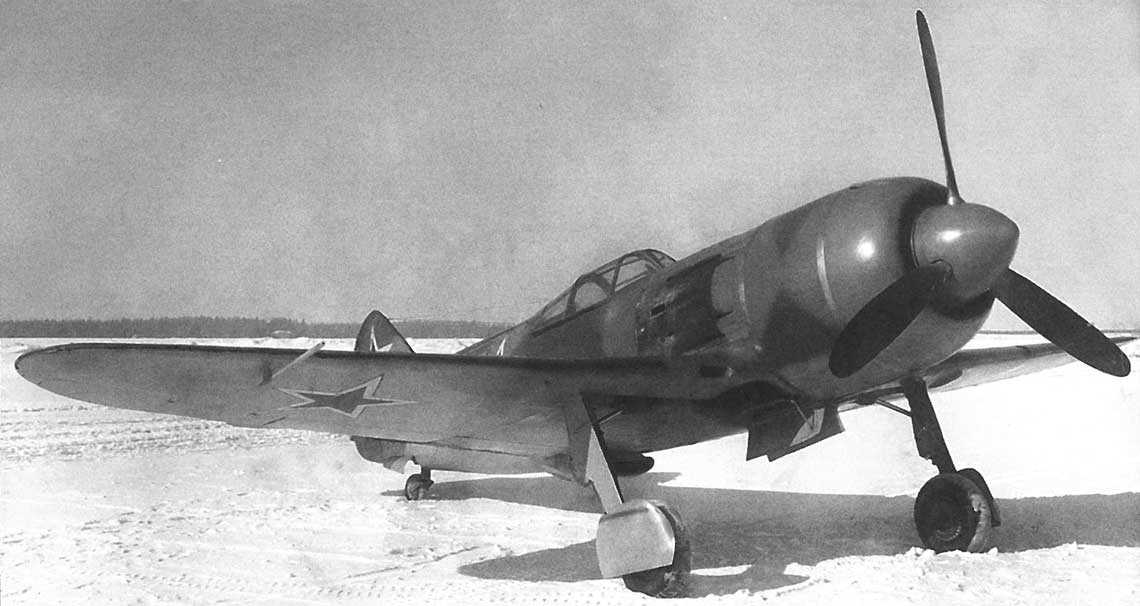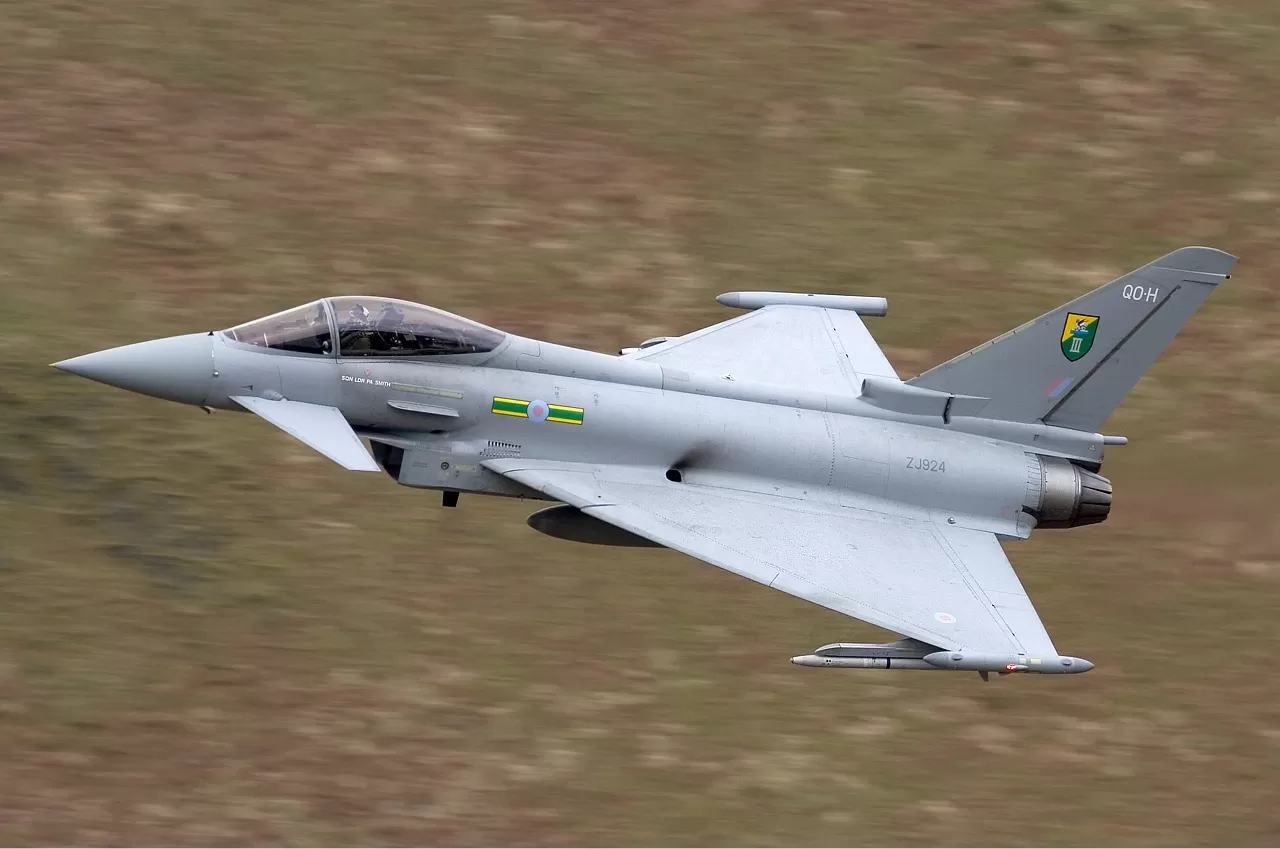Lavochkin-La-7

Lavochkin La-7
The La-5FN was a successful fighter and performed exceptionally well for a wood substitute construction. For the front, this was still not enough, especially since the Germans did not sit idly by, introducing the improved Messerschmitt and Focke-Wulf fighters into service. It was necessary to find a way to improve the performance of the La-5FN, and not launch a completely new aircraft into the series. It was not an easy task, but Semyon Alexandrovich Lavochkin coped with it.
In the summer-autumn of 1943, S.A. Lavochkin intensively worked on improving his La-5FN fighter with the ASh-82FN engine. He knew that performance improvements could be achieved in three ways: by increasing the power of the power unit and by reducing weight and aerodynamic drag. The first road was quickly closed due to the misfortune of the M-71 engine (2200 hp). All that remained was weight reduction and meticulous aerodynamic refinement. These works were carried out in close cooperation with the Central Institute of Aerohydrodynamics. Their results were to be used in the project of a modernized fighter, two prototypes of which were to be built according to the assignment set by the People's Commissariat of the Aviation Industry on October 29, 1943.
First, the aerodynamic casing of the engine was sealed. Why? Because the air, getting under the casing of the power unit, heats up inside, cooling the hot cylinders. Thus, the pressure of this air increases, and it tends to go outside. If it comes out from under the curtains, its speed is correspondingly higher, which gives a certain recoil effect, which is subtracted from the aerodynamic drag of the aircraft, reducing it. However, if the lid is not airtight and air escapes through the existing gaps, then not only is this recoil effect absent, but the air flowing through the gaps causes turbulence, which increases the resistance of the air flowing around the case. The second major change to the upgraded fighter was that the oil cooler was moved to the rear, from under the rear of the engine shroud, under the fuselage, just behind the trailing edge of the wing. This change also helped to reduce drag, since the radiator swirls did not occur in front of the wing-to-fuselage connection, but only behind the wing. As it turned out in the course of research, both solutions contributed to a decrease in drag, which resulted in an increase in maximum speed by 24 km / h - sealing the engine cover and by 11 km / h - radiator transfer, i.e. 35 km/h.
When preparing a serial technology for sealing the engine cover, it was also decided to reduce the ventilation holes behind the cover of the power unit, covered with curtains. A smaller drain means less cooling capacity, but the operation of the ASh-82FN has shown that it is less prone to overheating than the ASh-82F, and this is safe. At the same time, the engine received individual exhaust pipes instead of venting exhaust gases through air outlets of 10 pipes (on La-5FN, eight cylinders had one pipe for two cylinders and six were individual). Thanks to this, it was possible to raise the lower edges of the deflectors further from the upper surface of the wing at the junction with the fuselage, and also to move the air turbulence zone (the air flowing from the deflectors was filled with vortices). away from the wing.
In addition, the air intake for the engine was moved from the upper part of the casing of the power unit to the lower part, which improved visibility from the cockpit and made it easier for the pilot to aim, additional landing gear covers were introduced to completely cover the wheels after they were retracted, modify the wing-fuselage transition and remove the mast radio station antennas by introducing a mastless antenna into the vertical tail. In addition, the axial height compensation has been increased from 20% to 23%, which reduces the effort on the control stick. These solutions contributed to a further reduction in aerodynamic drag, resulting in an increase in top speed by another 10-15 km/h.
All these changes were made on the rebuilt La-5FN with serial number 39210206. His research at the Flight Test Institute of the People's Commissariat of the Aviation Industry at the Zhukovsky airfield began on December 14, 1943, but the test failed for a long time due to difficult weather conditions . It did not fly for the first time until January 30, 1944, but due to a failure on February 10, not many flights were made on it. Pilot Nikolai V. Adamovich had to leave the plane with a parachute after an inextinguishable engine fire.
In the meantime, the reconstruction of the second La-5FN was completed, which had serial number 45210150 and received the designation La-5 of the serial model of 1944. It is worth noting that, unlike earlier samples, on which individual solutions were worked out, this time the factory designation of type z was changed. “39” (La-5FN with a wooden wing spar) or “41” (La-5FN with a metal wing spar) to “45”. In this car, the engine casing was additionally sealed, the air intake to the engine was divided into two channels and transferred to the fuselage parts of the center section (two holds on both sides of the fuselage were then connected at the top, from where the air was directed to the air compressor through the air duct) and metal fenders, to which more wooden ribs and delta wood paneling were attached. A novelty was the VISz-105W-4 propeller, which had blade tips with a special perimonic profile to minimize the wave resistance of the blade tips, approaching the speed of sound at high speeds. Another change was the use of three B-20 guns instead of two SP-20 (ShVAK), both caliber 20 mm. The main landing gear struts were 8 cm longer than the La-5FN, and the rear wheel struts were shorter. This increased the aircraft's parking angle and resistance to rollover when throttle was added too quickly on takeoff, or on braking too hard during landing.
